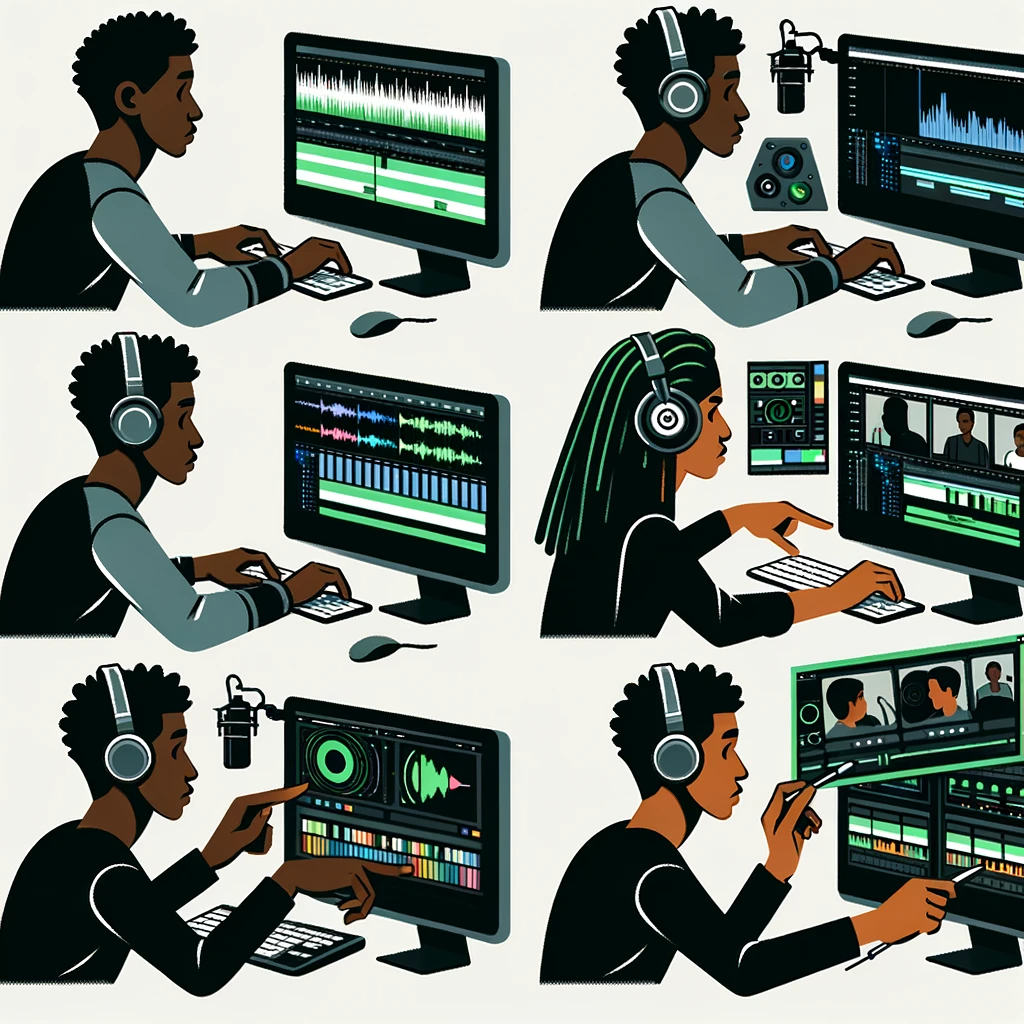Table of Contents
Editing is one of the most powerful tools in filmmaking—and one of the quietest. It happens after the cameras stop rolling, but it’s where the real rhythm, structure, and emotional punch of a film takes shape. In Nollywood, where resourcefulness meets rising creative ambition, editing is what transforms raw footage into a compelling, polished story.
This guide breaks down the editing process for aspiring Nigerian filmmakers and content creators—covering how films are shaped in post, what skills editors need, and how editing choices influence the way we experience a movie.
What Is Film Editing?
Film editing is the art and craft of selecting and arranging recorded footage to build a complete narrative. It brings together story, performance, pacing, and sound—turning hours of raw material into something that feels intentional, emotional, and cohesive.
Skilled editors work hand-in-hand with directors to translate what’s on the script—and in the mind—into a screen-ready experience. The choices they make influence everything from mood to meaning.
Key Stages of the Editing Process
While editing timelines vary depending on the size of the film and the budget, here’s a general breakdown of how the post-production process flows:
1. Organizing the Raw Footage
- All footage is collected, labeled, and organized for easy access.
- Editors watch through all scenes and note strong takes, moments, and reactions.
2. Assembly Cut
- Editors piece together scenes in the order of the script.
- This is a rough version—no effects, music, or color correction.
3. Editor’s Cut
- A more refined version of the film.
- Scenes are trimmed, transitions are tested, and pacing is adjusted.
4. Director’s Feedback & Revisions
- Director reviews the cut and provides notes.
- Scenes may be restructured, shortened, or swapped based on creative feedback.
5. Sound & VFX Integration
- Music, sound effects, foley, and dialogue edits are layered in.
- Any visual effects or animated elements are added.
6. Final Picture Lock
- Once the director approves the final structure, the edit is “locked.”
- Color grading and final mastering are applied.
Each phase is a blend of technical skill and creative instinct.

Creative Editing Techniques in Nollywood
Film editors use specific tools and tricks to shape tone, guide emotion, and structure story. Some common techniques include:
Types of Cuts
- Straight Cuts: Standard edits that keep the pace moving.
- Jump Cuts: Create a jarring or fast-forward effect.
- Match Cuts: Link two shots with similar visuals or motion for seamless transitions.
Controlling Rhythm
- Fast cutting during action scenes builds urgency.
- Slow cutting in dramatic moments lets emotion linger.
Parallel and Cross-Cutting
- Switching between scenes happening simultaneously builds suspense or contrast.
- This technique is common in thrillers, political dramas, and ensemble casts.
Montages
- A sequence of fast-paced shots to show time passing or development.
- Useful in training sequences, emotional recaps, or transformation arcs.
Kuleshov Effect
- Editing two unrelated shots together creates meaning in the viewer’s mind.
- For example, a neutral face followed by a crying baby suggests empathy.
These editing tools help guide how the audience sees, feels, and understands the story.
How Editing Shapes Emotion and Storytelling
The emotional power of a film is often determined in the edit. Through precise choices, editors:
- Control the pacing of scenes for tension or release.
- Shape the tone through rhythm and visual style.
- Build character arcs by deciding what to show and what to leave out.
- Influence the audience’s perspective by when and how a reaction is shown.
In Nollywood, where stories are culturally rich and dialogue-heavy, editing plays a major role in balancing tradition with modern visual storytelling.
Tools and Skills Every Nigerian Film Editor Should Know
Technical Tools
- Software: Adobe Premiere, DaVinci Resolve, Final Cut Pro, AVID
- Visual Effects: Adobe After Effects or DaVinci Fusion for basic compositing
- File Management: Organizing media, using proxies, exporting for different formats
Soft Skills
- Story Sense: Understanding how to structure tension, emotion, and clarity
- Attention to Detail: Watching for continuity errors or awkward transitions
- Collaboration: Taking feedback from directors, producers, and sound teams
The best editors aren’t just good with software—they’re powerful storytellers.
Innovation in the Editing Room
Modern editing is evolving, even in Nollywood. New tools and workflows are creating faster, more flexible possibilities:
- Remote editing and cloud collaboration
- AI-assisted tools for sorting takes, syncing audio, or suggesting cuts
- Mobile editing apps for on-the-go content creation
As Nollywood productions scale in ambition, strong post-production teams are more important than ever.
Final Thoughts
The edit is where the film finally finds its shape. For Nigerian filmmakers, understanding editing means unlocking the full power of your story.
Behind every great movie is an editor who knew how to bring the pieces together—with patience, precision, and purpose.
So whether you’re just learning the ropes or ready to cut your first film—remember: your edit is where your story comes to life.















Leave a comment